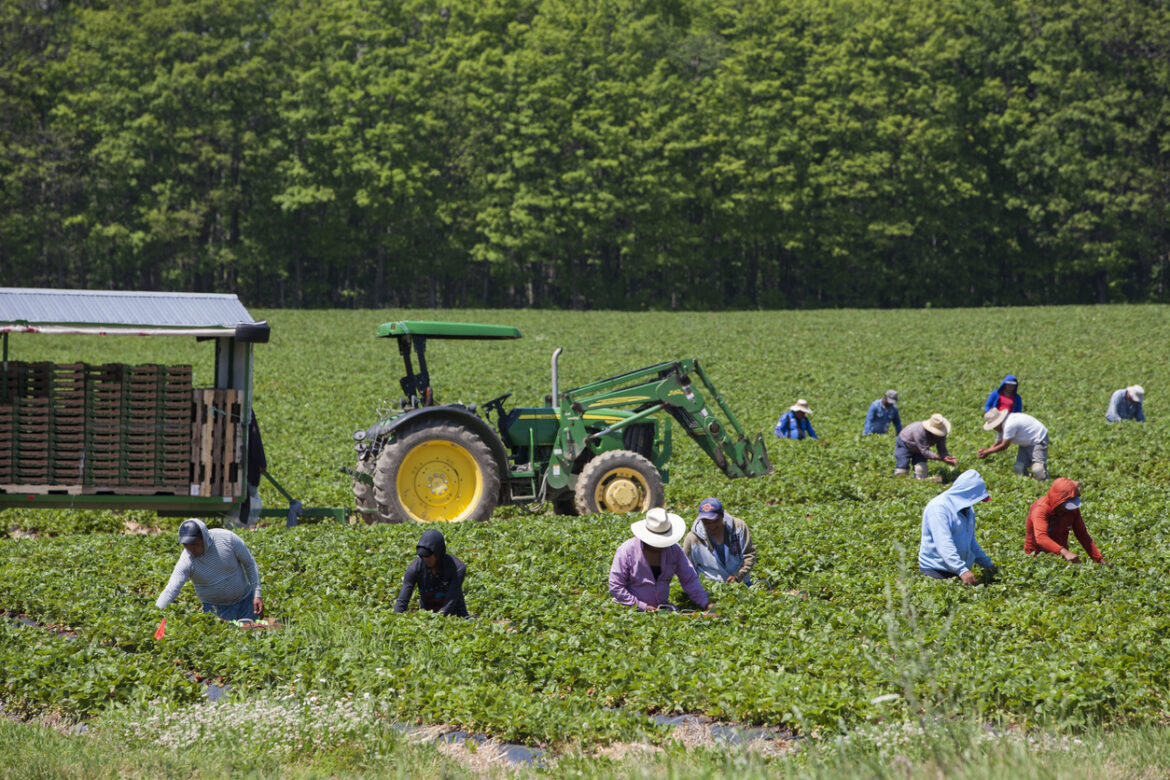“Canada’s temporary foreign worker programmes have been referred to as breeding grounds for modern forms of slavery, a United Nations expert warns.” 58 years ago, Canada, Mexico, and surrounding Caribbean countries came together to form what is commonly known as the Seasonal Agricultural Worker Program (the SAWP). Founded as an answer to agricultural labour shortages in Canada and unemployment issues in Mexico, it seemed like the perfect arrangement. However, over the years, this scheme has resulted in countless accounts of abuse and poor working conditions. Amidst the mistreatment and sheer racism, how much more mistreatment can these temporary workers take? Is Canada able to rectify this human rights violation?
In 2015, Ontario recorded “$5.4 billion dollars based on output and about 34, 280 jobs […]” thanks to the SAWP program, which, on paper, led to the provision of favourable labour to thousands of foreign workers. Only two requirements must be met to become a temporary foreign worker, or “TFW”: you must be at least 18 years old and come from Mexico or one of the participating Caribbean countries. With many people searching for better living conditions and fairer wages, one can imagine the high migration levels from South America to Canada. Canadian farms, on their end, must be enrolled in the production of specific farm related agriculture. This simple combination has allowed thousands of foreign workers to find jobs in Canada.
According to the Government of Canada, requirements for employers state that: “employers must provide the TFWs free roundtrip transportation.. must provide TFWs with adequate, suitable and affordable housing [and] must provide proof of inspection of the off-site or on-farm accommodation”
Although Canada declared that workplaces should have “proactive efforts made to prevent workplace abuse” and take “reactive measures to stop [it],” both old and recent proof has shown a complete disregard of these rules. Jamaican farm workers in Brantford Ontario denounce being treated like mules and punished for not working fast enough. “Our bosses are verbally abusive, swearing at us […] and threaten to send us home,” a worker states. CBC radio also provides evidence of a worker’s bunkhouse flooding with wastewater from overflowing toilets, with shower curtains used as doors to separate toilet stalls. Canadian employers “force them to live in cramped, rat-infested quarters with no privacy and with cameras installed.” In British Columbia, “workers were frequently met with suspicion and discomfort.” SAWP workers in Okanagan report incidents of racial abuse, segregation and surveillance. Visibly, correct living standards, basic privacy, and outright respect are limited as temporary workers continue to tolerate a plethora of injustices. It is then plausible to ask why workers in the know of these circumstances continue coming back to Canada. A Jamaican farmer’s testimony encapsulates the sacrifice made when moving to Canada: “It’s not really a choice [to come to Canada], because you have your family, and you need better for your family. So, you [gather] all this strength, come, work, to help them back home. That is the main thing, helping your family. What I went through in life, I don’t want my kids to go through. I want them to get better education, [so] that they can be a better man for tomorrow. So that is why I am here. Not because I want to, but…because I need a better life for my family.”
Interestingly enough, when reading between the lines of Canadian governmental guidelines, it seems to already suggest a hierarchical power dynamic between employers and employees. Canadian employers not having to “know the TFW’s names prior to their arrival,” implies a level of authority and control over these workers. This leaves temporary foreign workers further powerless to the exploitation and mistreatment endured. When looking for a job in Canada, individuals usually send their CVs or go through a basic interview process. The complete exemption of this within the SAWP creates a suspiciously unbalanced power relationship. Chris Ramsaroop, involved in Justice for Migrant Workers, aptly mentions: “it’s not just power, but it’s power coupled with racism.”
Although the SAWP agreement is purely business-oriented, aimed at providing labour to farmers, racism is prominently apparent. North America’s historical ties with slavery, well known to many, has undoubtedly created gaps in social treatments between “white people” and “black people.” Author Elise Hjalmarson states how “Black Africans were marked as ‘an exploitable source of energy, both mindless to the organizational requirements of production and insensitive to the subhuman conditions of work.” This misguided and false assumption seems to have resided within North American ways, and although not as visible currently, its remnants undoubtedly linger. The SAWP demonstrates a clear example in modern day, utilizing temporary foreign workers as mere cogs in the production chain. Additionally, racial stereotypes are used as a tool to distinguish between groups of workers of different nationalities, asserting for example, that while Mexican workers are ‘docile and malleable’, Caribbean workers are ‘resistant.’
Conversely, the president of Foreign Agricultural Resource Management Services, Ken Forth, presents a counter argument to the allegations made against Canadian farmers, showing his deep frustration towards the recent negative focus on temporary foreign workers’ living conditions. One report showed an overwhelming feeling of pride and satisfaction among the vast majority of farm workers. Forth even contended that farmers “treat them like family because without them there would be no food on the table.” This disconnect presents an intriguing question as to how Canada should deal with the Seasonal Agricultural Workers Program.
The Ontario government has tried to set the record straight by referring to the fact that “migrant workers are guaranteed protections under the Agricultural Employees Protection Act (AEPA), which allows workers to join employees’ associations.” However, the United Food and Commercial Workers Union (UFCW) is pushing for migrant workers to be included in the Ontario Labour Relations Act, guaranteeing them the right to freedom of association. Al Jazeera suggests that providing permanent resident status can protect migrant workers from exploitation and exclusion. The government of Ottawa is also increasing its level of protection in regards to TFWs. By conducting stricter inspections, providing greater accessibility to their ‘Tip Line’ (made to report abuse) and promoting more transparency about their rights as workers, some facets of the Canadian government hope to protect valuable temporary foreign workers. To help vulnerable employees, the Canadian Labour Congress suggests replacing the “employer-specific work permits with open work permits” as well as providing “permanent residency opportunity for low-wage workers.” These steps must be taken to finally give migrant workers a chance to equal rights and protection on Canadian soil.
As much as Canadians can try to latch on to this self-serving labour scheme, temporary workers continue to be simply seen as “a flexible, ‘just in time’ workforce that takes up the dirty, difficult and dangerous jobs now rejected by most Canadians.” It is now up to the Canadian government to decide whether they should actively dispose of this program, trapping workers into unlawful ‘prison lives,’ or carry on with this exploitative cycle of labour.
Edited by: Rafaela Paquet

I am currently in my second year at McGill University, pursuing a B.A. Honours in International Development Studies with a minor in Geography. As a staff writer for Catalyst, I am particularly interested in migration and refugee flows, with a focus on global health and governance.

